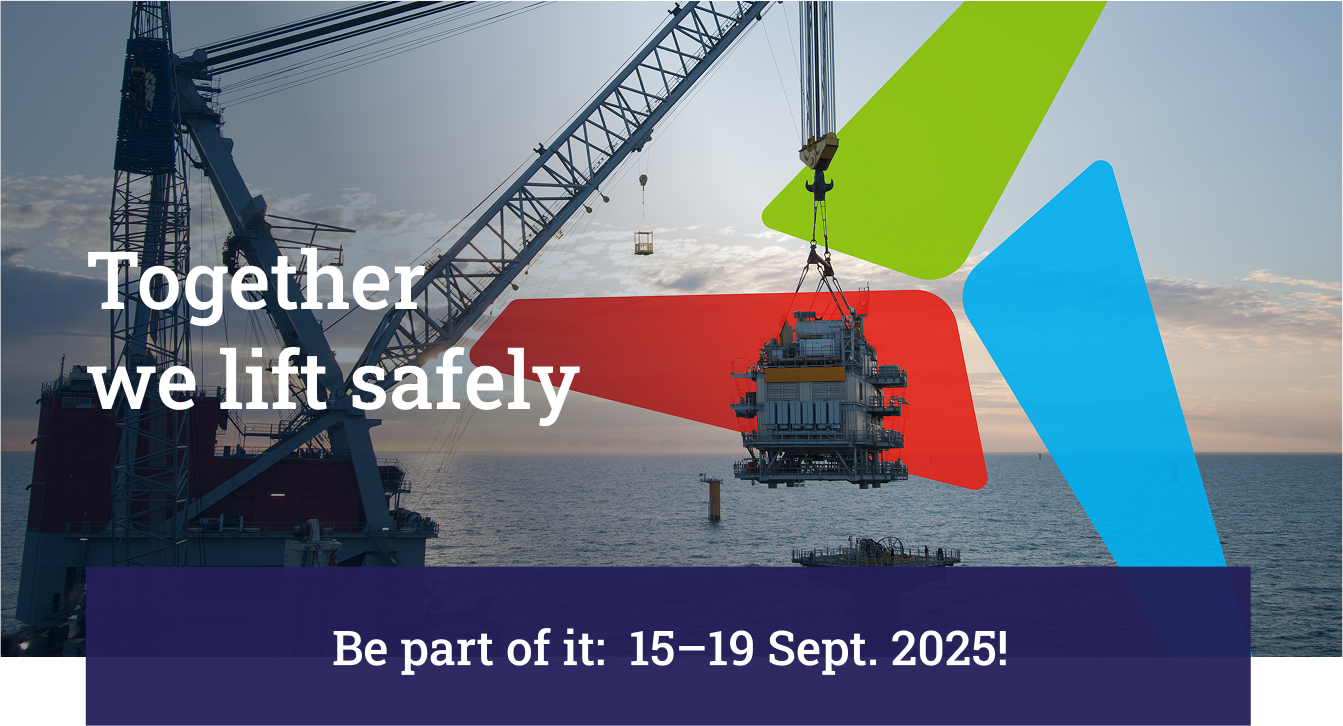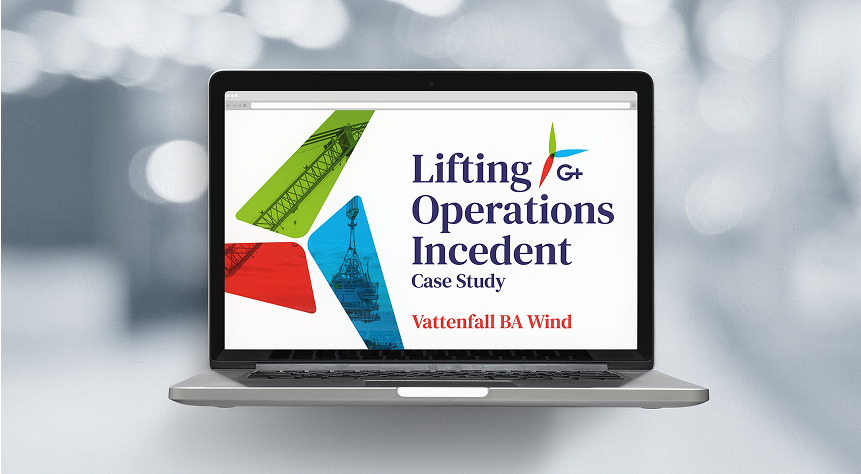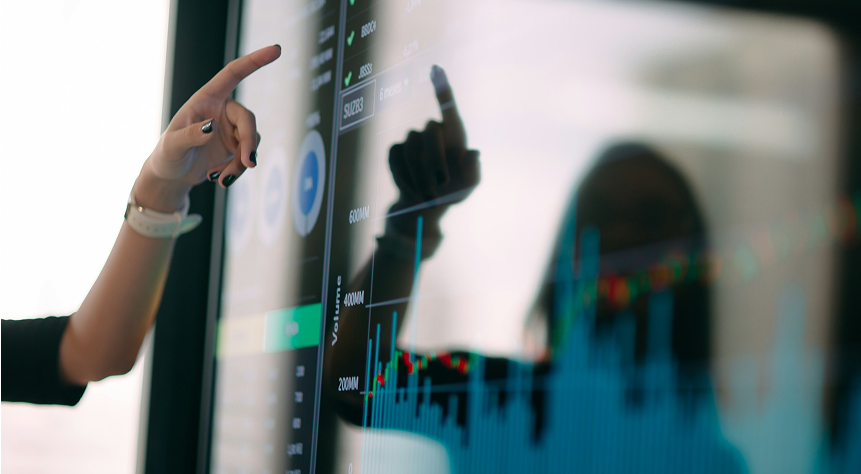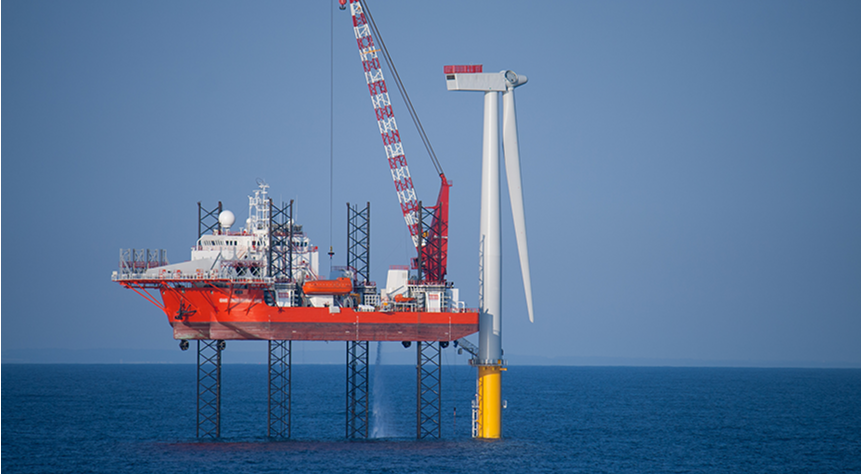Lift Safer, Work Smarter.
The Lifting Safety Campaign, hosted by G+ Offshore Wind Health and Safety
Organisation and SafetyOn, in partnership with the Energy Institute.

Lifting is everywhere in an offshore wind project, from deployment of FLiDAR buoys, to construction and installation, onshore civils works and warehouses and the all the equipment and material handling needed during operational phases. It has long been a focus of the G+, and this Lifting Safety Week we want to share with you all the materials and resources so that together, we lift safely.
How can I improve safety in lifting?
Have a look at the following actions you can take in order to raise awareness of the dangers of lifting and what steps can be taken to improve standards in your business

Share this lifting incident Case Study!
Read more »
Assess your companies lifting systems and procedures.
Read more »
Give a toolbox talk, or a safety moment!
Read more »
Plan a Workshop for your Frontline with our Available Tools
Read more »
Is your Material Handling "Safe by Design"
Read more »Lifting Safety with previous Board Director, Clark MacFarlane
Clark was previously a G+ Director and is the UK chairman of Siemens Gamesa Renewable Energy
He has spent over 40 years helping to shape a safer, more resilient offshore wind industry and his commitment to raising H&S standards has left a lasting impact across the entire sector.
Share this incident case study.
During an offshore wind turbine maintenance operation, the main bearing was scheduled for replacement. The procedure required removal of the rotor assembly, including the hub and blades, using a JUV and lifting tools. While rotating the rotor from vertical to horizontal, the yoke assembly failed, causing the hub and blades to fall and strike the jack-up vessel. No personnel were injured, but lifting accessories, tools, and a secondary crane were damaged during the incident.
Use this industry case study to learn more about how G+ Lifting Guidance can help to prevent large scale incidents like this.
Assess your company's lifting systems and procedures
Lifting operations play a critical role in the offshore wind industry, spanning construction, maintenance, and logistics.
The G+, in association with the Energy Institute has produced this Good Practice Guideline (GPG), which aims to share, advance and encourage good practice for the governance of lifting operations in the offshore wind industry, setting out the collective expectations of G+ members.
Use this GPG in conjunction with our excel checklist to make sure you and your technicians are lifting as safely as possible
Give a Toolbox talk, or a safety moment
Toolbox is the Energy Institute's learning from incidents database. Lifting incidents is one of the categories we look at when the G+ collect Toolbox submissions.
Below are three Lifting Incidents:
1. A heavy load dropping to a CTV deck, causing minor damage
2. A near miss event involving a davit crane chain hoist
3. A davit crane foundation failing and causing the entire crane to tilt
If you have any lifting incidents others could learn from, please get in touch at [email protected]
Plan a workshop with your frontline
The workshop can be delivered by any facilitator and is designed to be used with groups of technicians who work in offshore wind operations.
The Improving Compliance Workshop is not a behavioural audit and does not set out to find out what participants are doing wrong. Instead it aims to provide a safe space for those who are expected to comply with the procedures to voice their opinions about why non-compliance occurs, and how this could best be reduced. It is not about blame, but about enquiry, learning and improvement.
Is your material handling Safe by Design?
Discover the latest lifting insights from the G+ Safe by Design workshops and apply the recommended best practices to improve your material handling processes.
Below find reports including the Material Handling PDF and Access, and Egress guides to help enhance safety and efficiency in your lifting guidelines!

Core Principles of Lifting Governance
Offshore Wind Companies (OWCs) should ensure that all personnel involved in leadership, development, implementation, and management of the governance system, as well as in planning and carrying out lifting operations and supporting tasks such as risk assessment, inspection, and audit, have and maintain the necessary competencies for their roles. They should also have access to lifting subject matter expertise and ensure that those responsible for defining and assessing required competencies are themselves competent. Furthermore, OWCs must take the competence of personnel into account when conducting risk assessments and planning lifting operations to ensure safety and effective operational management.
Offshore Wind Companies (OWCs) should ensure that senior management demonstrates strong safety leadership by setting clear expectations and providing positive examples of safe attitudes and behaviors. They should ensure that everyone involved in lifting operations has their roles, responsibilities, and associated competencies clearly defined, communicated, and understood. Roles and responsibilities should be established at a high level in corporate or regional lifting procedures, with specific details for individual lifts outlined in lower-level documentation such as lift plans. For each lift, one person must be designated as in charge, and all personnel should understand that they have both a duty and the right to stop the lift if they perceive an imminent danger.
Offshore Wind Companies (OWCs) should identify, document, and implement appropriate stakeholder engagement for all work processes and establish systems, processes, and agreements to ensure effective information sharing between all parties, including both the reasons behind decisions and the information itself.
Offshore Wind Companies (OWCs) should categorise all lifts.
Offshore Wind Companies (OWCs) should ensure that a suitable and sufficient risk assessment is prepared and documented for every lift, regardless of its category. These risk assessments should be carried out by personnel with competence appropriate to the lifting operation and the assessment process, and should actively involve expertise from frontline lifting teams. Additionally, risk assessments must be tailored and regularly updated to accurately reflect the specifics of each lift, taking into account its operational and environmental context.
Offshore Wind Companies (OWCs) should ensure that a documented lift plan is prepared for every lift, with the content and level of detail appropriate to the lift category, and that a permit-to-work system is available for use with higher-hazard lifts or when other work is taking place in the vicinity of the lift.
Offshore Wind Companies (OWCs) should apply human performance principles throughout the development and implementation of the lifting governance system, plan and conduct lifting operations to ensure effective communication and a clear understanding of responsibilities, and take proactive steps to prevent complacency from developing among personnel.
Offshore Wind Companies (OWCs) should ensure that exclusion zones are established around each lifting or landing area, that any stored energy is identified in the lift plan with controls implemented to keep personnel out of the line of fire or danger zone, and that operations follow the G+ Dropped Loads guidance.
Offshore Wind Companies (OWCs) should ensure that lifting equipment is designed, reviewed, and accepted according to safety-by-design principles, involving all relevant parties and their lifting specialists where appropriate. Equipment must be suitable for its intended lift, used according to standards and Original Equipment Manufacturers (OEM) instructions, and maintained, inspected, and operated to ensure safety, integrity, and reliability. Inspections should be performed by appropriately independent personnel or qualified third parties at required intervals, with all findings recorded and analysed to support continual improvement.
Offshore Wind Companies (OWCs) should have clear criteria and procedures for managing both planned and reactive changes, as well as well-defined processes for conducting technical due diligence (TDD) checks on new equipment and work processes.
Offshore Wind Companies (OWCs) should keep their governance system under systematic review and revision, establishing processes to detect warning signals, capture and share lessons learned, and identify opportunities to improve safety. They should share lessons both across the organization and the wider industry, systematically identify potential consequences of incidents, flag high-potential incidents, and implement verification systems to assess the effectiveness of risk controls. Competent personnel should schedule and conduct periodic audits and reviews to ensure continuous improvement.
Are there additional resources available to support Lifting Week?
Please see below for a downloadable lifting briefing pack, more Safe by Design workshop reports and more!
